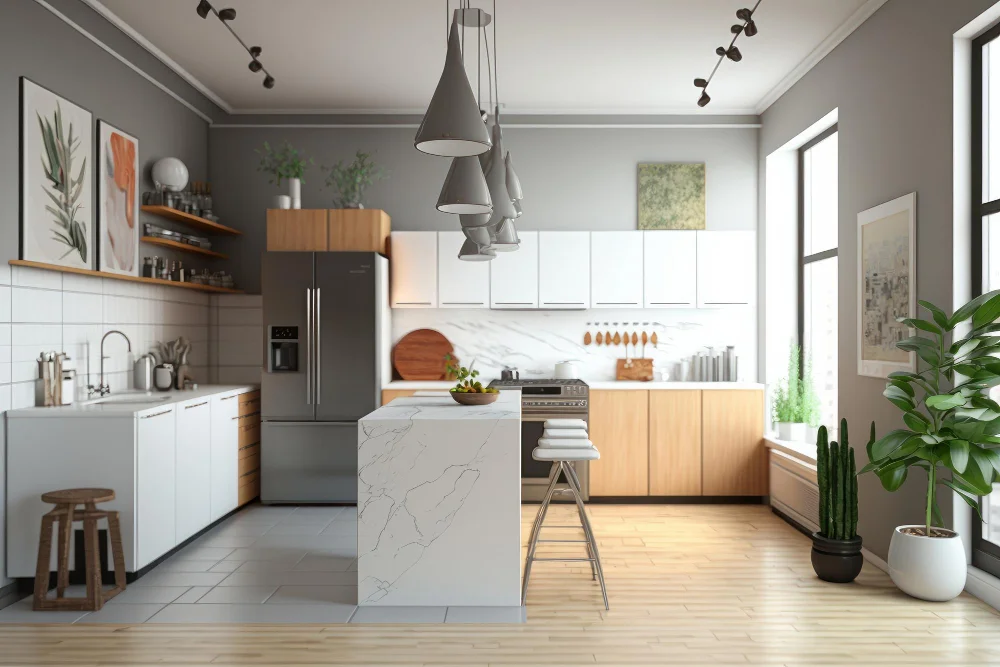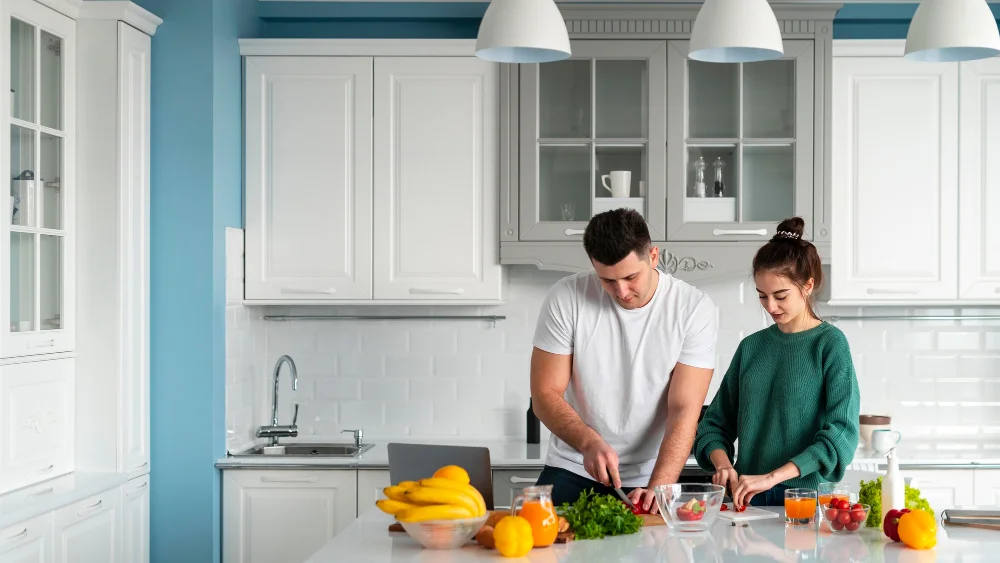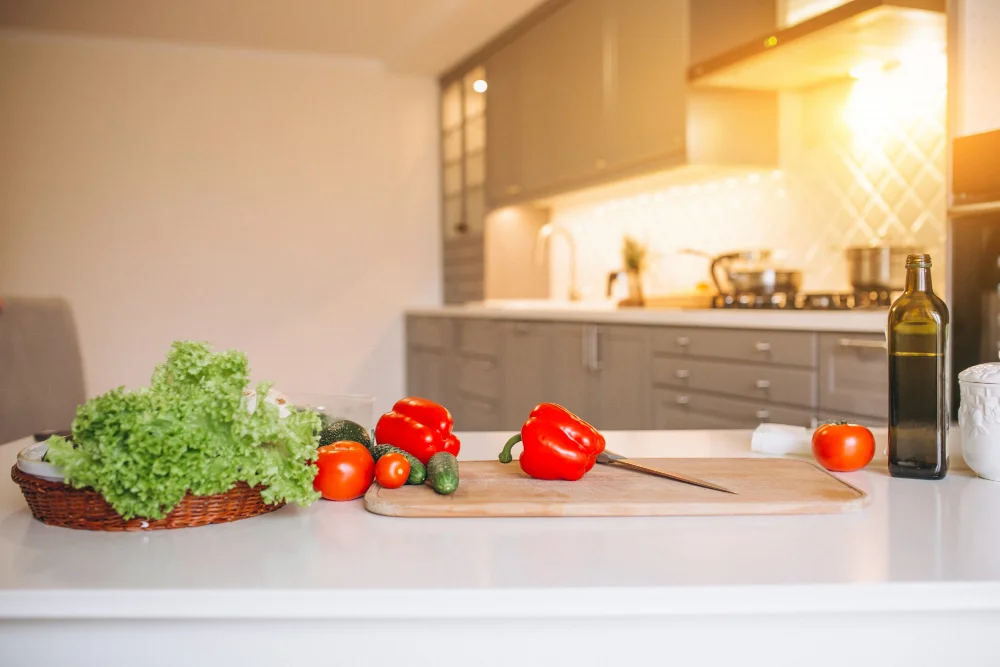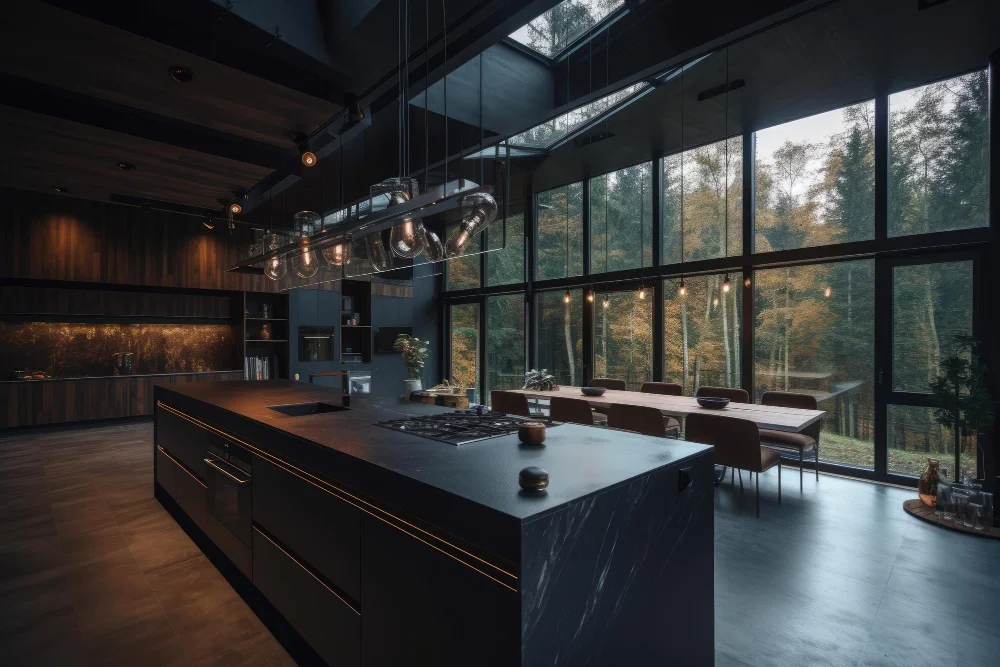Last updated on
Explore the advantages and disadvantages of direct and indirect lighting in kitchen spaces. Find the perfect illumination solution for your culinary haven.
The kitchen is the heart of any home. It’s where we cook, eat, and spend quality time with our loved ones.
Therefore, it’s crucial to have proper lighting in this space to create a comfortable and inviting atmosphere. When it comes to kitchen lighting, there are two primary types: direct and indirect lighting.
Each has its own unique benefits and drawbacks that can significantly impact the overall look and feel of your kitchen space. In this article, we’ll explore the differences between direct vs. indirect lighting for kitchen spaces so you can make an informed decision about which one is right for you!
Key takeaways:
- Direct lighting provides bright and focused illumination for tasks.
- Indirect lighting creates an ambient glow and makes small spaces appear larger.
- Choose light fixtures that complement your kitchen’s aesthetic and provide adequate brightness.
- Task lighting is essential for specific activities, while ambient lighting sets the mood.
- Combine direct and indirect lighting for a balanced and functional kitchen.
What's Inside
Direct Lighting Benefits

Direct lighting is a popular choice for many homeowners due to its ability to provide bright and focused illumination. This type of lighting is ideal for task-oriented activities such as cooking, chopping vegetables, or reading recipes.
Direct light fixtures are typically installed above work surfaces like countertops and islands where they can shine down on the area below.
One of the main benefits of direct lighting in kitchen spaces is that it provides excellent visibility while working with sharp knives or hot pans. It also helps reduce eye strain by providing ample light in areas where you need it most.
Another advantage of direct lighting is that it creates a modern and sleek look in your kitchen space. With so many different styles available, you can easily find fixtures that match your decor preferences while still providing optimal functionality.
Indirect Lighting Advantages

Unlike direct lighting, which shines directly on the surface or object being illuminated, indirect lighting bounces off walls and ceilings to create an ambient glow throughout the room.
One of the main advantages of indirect lighting is its versatility. It can be used as both task and ambient lighting depending on how it’s installed in your kitchen space.
For example, if you have cabinets with glass doors or open shelving that displays decorative items such as dishes or glasses, installing LED strip lights above them will provide subtle illumination without creating harsh shadows.
Another advantage of indirect lighting is its ability to make small kitchens appear larger by bouncing light off surfaces like walls and ceilings. This technique creates depth perception by illuminating areas that would otherwise be left in shadow with direct overhead lights.
Lastly, Indirect Lighting fixtures are often more aesthetically pleasing than their direct counterparts since they come in various shapes & sizes. They can also serve as statement pieces while providing ample illumination for your cooking needs.
Choosing Light Fixtures

There are various types of lighting fixtures available in the market, including pendant lights, chandeliers, track lights and recessed lights. Pendant and chandelier lighting can add an elegant touch to your kitchen while providing ample illumination for cooking tasks.
Track lighting is perfect for highlighting specific areas of your kitchen such as countertops or cabinets. Recessed lighting provides a clean look that blends seamlessly with any decor style while also offering excellent task illumination.
When selecting light fixtures for your kitchen space, consider both form and function. Choose designs that complement the overall aesthetic of your home while also providing adequate brightness where you need it most.
It’s important to note that different types of light bulbs can affect how warm or cool the ambiance feels in your space; therefore, choose bulbs with appropriate color temperatures based on personal preference and intended use (task vs ambient).
Task vs Ambient Lighting

Task lighting is designed to provide focused illumination for specific activities such as cooking or food preparation. On the other hand, ambient lighting provides overall illumination for the entire space.
Task lighting is essential in any kitchen because it helps you see what you’re doing while preparing meals or working on other tasks. It can be achieved through under-cabinet lights, pendant lights over an island or sink area, and track lights that can be directed towards a particular work surface.
Ambient lighting sets the mood of your kitchen by providing general light throughout the space. This type of light creates a warm and inviting atmosphere that makes your guests feel comfortable while dining with you in this room.
It’s important to strike a balance between task and ambient light when designing your kitchen’s layout plan so that both types complement each other well without overpowering one another.
Kitchen Layout Considerations

The size and shape of your kitchen will determine how much light you need and where it should be placed. For example, if you have a small galley-style kitchen with limited natural light sources, adding direct lighting under cabinets or above workspaces can help brighten up the area.
On the other hand, if you have an open-concept kitchen that flows into a dining or living room area, indirect lighting may be more suitable as it creates a softer ambiance that blends seamlessly with adjacent spaces.
Consider any focal points in your kitchen such as islands or breakfast bars. These areas often require task-specific illumination to ensure they are well-lit for cooking and food preparation activities.
By taking these factors into consideration when choosing between direct vs.
Combining Direct & Indirect Lights

Direct lighting provides focused illumination on specific areas, such as the countertop or stove, while indirect lighting creates an ambient glow that fills the entire room.
By combining these two types of lights, you can achieve both task and ambient lighting in your kitchen. For example, you could install pendant lights above your island or sink for direct light while also adding under-cabinet LED strips for indirect light.
When choosing which type of fixtures to use in combination with each other, it’s important to consider their placement carefully. You don’t want any shadows cast by one fixture interfering with another’s illumination.
Combining direct and indirect lights can help create a balanced look in your kitchen space that is both functional and aesthetically pleasing.




